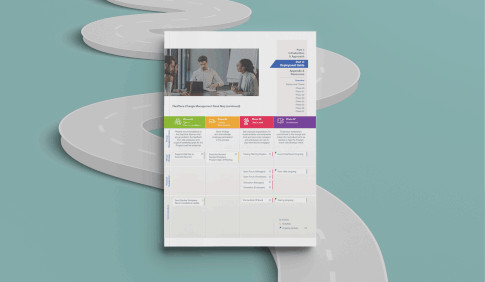Fun fact: I’m a musician.
When I first arrived at The Clearing, I felt that on paper I didn’t have as much tangible consulting experience as my colleagues who were, in the traditional sense, more seasoned in the industry. One day, one of our leaders said to me, “You do have a lot of experience. Just because it’s not in management consulting doesn’t mean you don’t have a lot of insights to offer.”
Those kind words have stuck with me.
Every person, regardless of their years of experience or their level in an organization, has perspectives, life experiences, and ideas to bring into the conversation. Oftentimes, nontraditional idea generators and “outside the box” thinkers are the best individuals to offer advice as they offer insights industry pros haven’t heard of, considered, or tried before.
If individuals only listen to their internal colleagues or individuals who think like them, they become stuck in an echo chamber. This can quickly become problematic, especially at the leadership level. However, when a leader commits to being open and listening to people from the widest variety of backgrounds and experiences, they’re going to obtain a wide net of opinions. That brings me to today’s topic: Active listening.
What Exactly Is Active Listening?
On a basic level, active listening is listening with more than one sense. It’s not about only using your ears; it’s about using your eyes and additional senses to hone in on all of the forms of communication someone is using. And it matters – 90% of communication is nonverbal. Thanks to Zoom meetings and masks, experts believe it’s more important than ever in the post-pandemic world.
Think about it: understanding what someone is saying is not just hearing what they’re saying. It’s actively seeing their body language, watching their responses, and hearing their words and tone of voice. When you are actively listening and paying attention to the conversation you are engaging in, you’re understanding the deeper meaning and the why vs. the more passive act of simply listening to the words and premeditating a response.
How Active Listening Impacts Leaders and Employees
One aspect I value about active listening is it can remove hierarchies across levels, allowing professionals to listen to each other as humans instead of simply leaders and employees. To actively listen, there’s a level of speaking and hearing that must occur. Only then will you be able to understand where each person is coming from.
Here’s why it matters. Employees are the people doing the work on the ground – noticing hiccups, observing firsthand opportunities to improve a system – they’re the ones deep in the weeds. If listening occurs up and down at all levels, and both people in the conversation are actively listening, their roles are irrelevant. Active listening allows good ideas to percolate in both directions. This also allows for more meaningful, human connection rather than conversations feeling strictly like transactions.
Today, The Clearing uses a new framework with clients that utilize active listening principles. In it, we note the difference between operating, managing, and leading. The idea is that there are different times we must be in different modes. These three roles happen across the organization and at all levels, making active listening the key to realizing the most value out of each mode.
How You can Practice Active Listening
- Minimize distractions. Two ways to put this into practice immediately are to close your email inbox, especially in a virtual situation, and to mute phone notifications. This allows you to give your undivided attention to the person and conversation at hand. The more attention you give to those you’re engaging in a conversation with, the more you will be able to read between the lines and pick up non-verbal cues.
- Be curious. Ask follow-up questions and dig deeper. Learn how they are feeling and look at how they are showing up. Pay attention and look beneath the surface; you may be able to learn a lot more about this person – not only as an employee or colleague – but also as a human. You will learn more than you anticipated when you take the time to fully engage.
- Be authentic. Show up authentically and honestly. If you show up as your true self and are intentional and thoughtful about being honest and transparent, you’re going to be able to get to a much different place in the conversation. If you are showing up in a way that builds up a wall or puts on a mask, even if you think you’re listening, you may be unintentionally communicating a lot through your own body language (i.e., the rigidity through your facial expressions or posture).
- Ask for input. Create a space that’s safe for people to come to you so that you have the opportunity to listen. Additionally, be clear you actively seek other thoughts and opinions. You may assume everyone realizes that you welcome input, but that may not be the case. Additionally, be open to the new ideas and perspectives that come your way, they may just surprise you.
These ideas are just the tip of the active listening iceberg. If you’re interested in learning how you can become a more effective leader by becoming a more effective listener, I’d love to share more. I also would love to hear your ideas on active listening, so please get in touch! You can reach me anytime at Abbie.Beekman@dev2021.theclearing.com.





